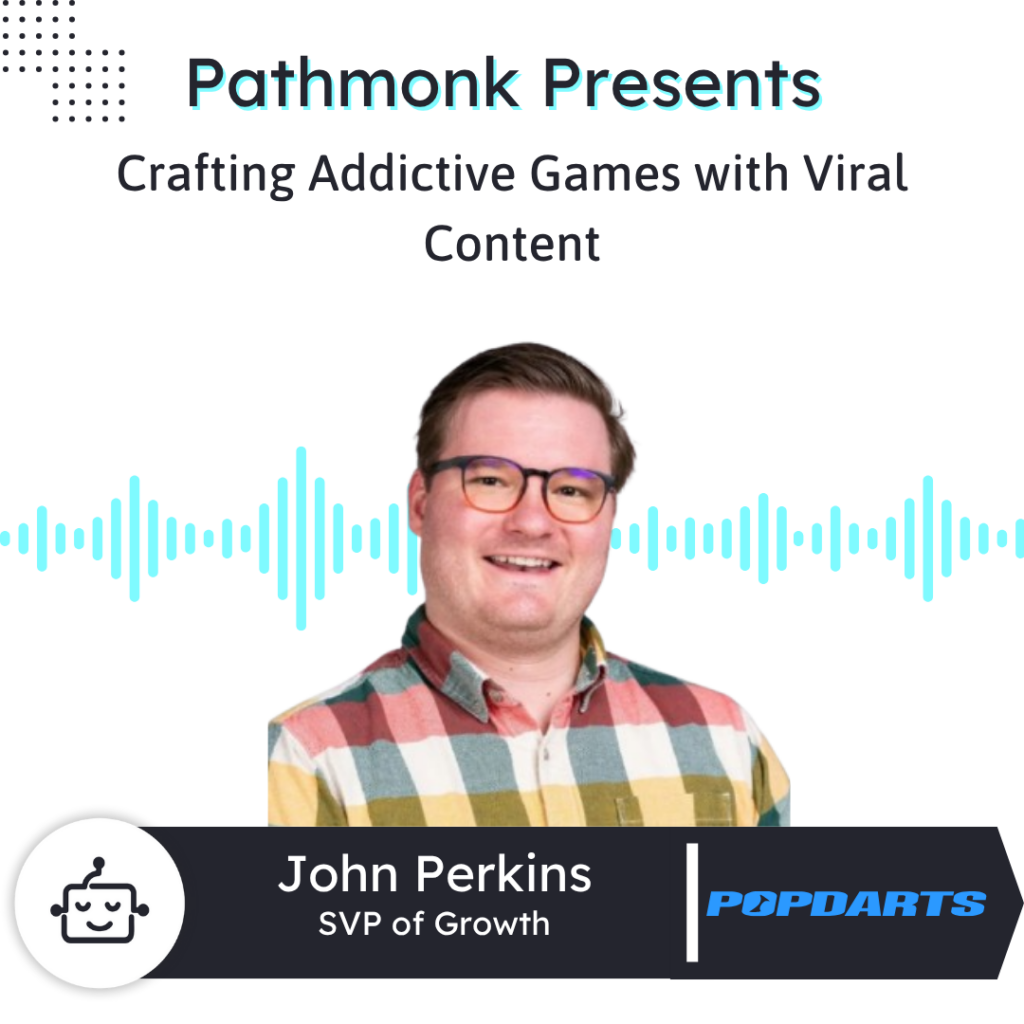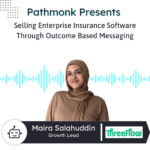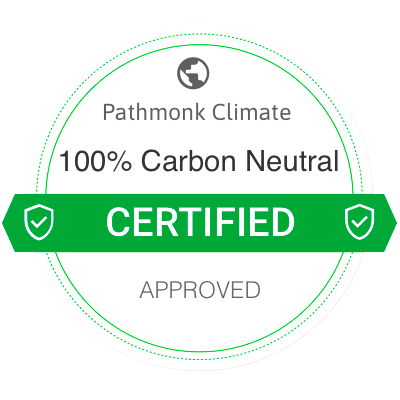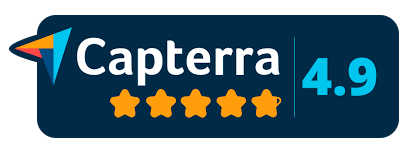
Introduction
Join us on Pathmonk Presents with John Perkins, SVP of Growth at Popdarts, creators of addictive suction cup dart games. John shares how Popdarts grew through viral TikTok content and is now evolving into a competitive sport with a national championship on ESPN Ocho.
Discover strategies for crafting engaging content frameworks, optimizing Shopify product pages with user-generated content, and boosting e-commerce conversions. Learn how to break consumer patterns with strategic storytelling.
Tune in for actionable insights to drive growth and create fun, community-focused brands that captivate audiences!
Increase +180%
leads
demos
sales
bookings
from your website with AI
Get more conversions from your existing website traffic delivering personalized experiences.

Rick: Pathmonk is the AI for website conversions. With increasing online competition, over 98% of website visitors don’t convert. The ability to successfully show your value proposition and support visitors in the buying journey separates you from the competition online. Pathmonk qualifies and converts leads on your website by figuring out where they are in the buying journey and influencing them in key decision moments with relevant micro experiences like case studies, intro videos, and much more. Stay relevant to your visitors and increase conversions by 50% by adding Pathmonk to your website in seconds, letting the AI do all the work and increase conversions while you keep doing marketing as usual. Check us out on Pathmonk.com.
Hey everybody, welcome to today’s episode of Pathmonk Presents. Today we are joined by John Perkins, who is the SVP of Growth at Pop Darts. John, welcome to the show.
John Perkins: Thanks, Rick. I’m excited to be here, man.
Rick: I’m excited to talk to you, John. I want to just get right into it. Maybe let’s start with the basics a little bit. If you can, tell us a little bit about the big idea behind Pop Darts, and if you were explaining it to a friend over coffee, how would you describe what you do?
John Perkins: Yeah, that’s great. So I’ll start with Pop Darts. If you haven’t seen it yet—and you probably have, we’re everywhere—you’ve probably seen these viral videos on TikTok and all over social media of suction cup darts either landing on bald people’s heads like yours, Rick, or some of our gameplay videos. But what we like to say is we’re in the business of making active games that are super fun, addicting, and bringing people together. So that’s what we’re up to nowadays.
The guys started the company—they invented the game, they invented Pop Darts. So that’s an interesting situation, and I’m sure we’ll dive into all the marketing stuff there. What my job is specifically: I’m looking at all the different ways we can grow the company and go from being the brand that we are to the brand that we want to be.
Rick: Awesome. Just out of curiosity, do you guys play a lot in the office, or how does that work?
John Perkins: We’re a distributed team, but I think if you ask any of us, we have way too many Pop Darts. I know if you ask my wife, she’d say we just have too many around the house. But yeah, man, it’s a fun job. We get to play a lot.
Rick: Yeah, no, that’s awesome. I was wondering if there were any big guys—any bald-headed guy like myself in the office—just people trying to target him, but it wouldn’t be fun. I would fight back, 100%.
John Perkins: Yeah.
Rick: All right, good. John, can you tell us a little bit about which types of customers are the best fit for your products? Give us an idea of your ICP, to keep the marketing lingo going. And, in a way, how does your website impact their shopping experience? Are they finding what they’re looking for? Just give us an idea of who is buying Pop Darts generally.
John Perkins: Yeah, that’s a great question. Our core customer, our ICP like you said, is typically males. They could be anywhere from 13 all the way up to 40—it depends. Most of them are competitive or have some form of an athletic background. I would say digital natives on social media—that’s some of the avatar attributes that have defined us and where we started and where we grew from.
We can talk about segmentation and what we’re doing now to reach other audiences, but in terms of if you’re going to see someone playing Pop Darts, it’s probably going to be someone who has some of those characteristics.
Website—like I said about us, the entire company was basically grown during COVID through TikTok and through super engaging content. That’s interesting for us because it presents a unique challenge where most of our customers were coming through the TikTok organic social channel and then purchasing on the website. As we’ve expanded and grown, the website’s taken a different role. Honestly, we’re in an evolution of it right now, like so many brands are in our space.
If you hit our website, you’re going to see tons of content. You’re going to see a lot of active gameplay, competitive language, and we like to position ourselves almost as a middle ground between a game that you play at home—a great family game—and also a sport. We can talk about some of the awesome things we’re actually doing this year to push the sport of Pop Darts outside of just the game.
Rick: Yeah, that would be cool actually. Do you have anything coming up? Are you guys going to the Olympics or how does that work?
John Perkins: Yeah, eventually we’ll get there. But actually, in August, we have our first national tournament, National Championship, which will be broadcast live on ESPN Ocho. Super exciting event for us—obviously, who would have thought we’d be on ESPN? But we’re taking this opportunity to do what we’ve done organically and from a lo-fi perspective, and we’re just going to absolutely blow this thing up. It’s going to be super exciting, super fun, and it’ll be a pivotal moment for us to show people the insanity and the craze in our loyal customer segments. We’ll be able to bring that to the main stage.
Rick: That’s awesome. First of all, on ESPN—I would never expect to see that. I know Pop Darts, right? I’ve played with them as a kid also, but thinking about just going on ESPN and that going live—that’s serious. But at the same time, it’s a sport, it’s a game, and you have those raving fans ready to tune in and see more of it.
I want to drive it back for a second. When you talk about your acquisition channels, right, you’re talking about TikTok. It’s big—you’re creating engaging content. Have you seen anything that works best when it comes to content? What kind of content do you guys—or maybe you personally—prefer seeing when it comes to Pop Darts, and what makes you keep scrolling and wanting to see more of it?
John Perkins: Yeah, that’s a pertinent question. The difference now in 2025 compared to even just a couple of years ago—it was really easy for it to be a conversion event. You create really engaging content, doom-scrolling hooks, something that keeps people watching. If you really break it down, I think thinking in five-second increments is important. You have to earn and keep in five-second increments.
We did that really well. It was a new product, a new game, and obviously there are a lot of things about this that are satisfying—the actual stick of the suction cup, the pop when you pull it off, being able to throw it on all these different surfaces. That makes people just break the day, break their patterns. We call this pattern interrupts.
That easily equated to sales. We could get their attention, give them a link and promo code—they’re on the site and they’re purchasing. Now the consumer—because of the economy and a bunch of other reasons, and also market saturation—once people see something, you have to give them something else. It has to be new, it has to be different.
For us, what’s happened with our creative and content is we’ve had to get a lot more strategic. It’s not enough just to do what we’ve always done, which is show the game and play. Now we’re having to come up with frameworks and really intentional content that breaks people from their assumptions.
We can dive into how we’re doing that. Full transparency—it’s not something we’ve completely figured out yet. But we approach things from these frameworks of thinking. We can talk about one of our successful ones, which is an over-the-house series. We’ve had to grow and shift a little bit from thinking, “Okay, let’s show people playing Pop Darts,” to “Let’s show people doing interesting things with suction cups, with our darts, and play and do different things.”
We have a fantastic content team—they’re always coming up with great ideas. But I do think that’s the one area, for me, when I look at other brands or when people ask, “Hey, what would you do?”—it’s that you have to put almost all of your eggs in the content basket. Really focus on each and everything you produce, break it down, and be extremely aggressive with your feedback. If it’s boring, if it’s uninteresting, if there’s any part where it could be better or you would do something else, you have to do that, iterate, and then put it out there.
Then you have to keep putting it out there. So again—being surgical with your content is the best thing you can do. You’ll see the downstream impacts across your site—conversions, engagement on the platforms. That’s really the only element that you can still control almost 100%, and it’s the one that everybody is basically optimizing for.
Rick: Yeah, that’s interesting to see how you guys are going about it. It’s not just a science—it’s an art and a science, bringing that content and obviously understanding the algorithm. That sounds pretty good. I’m curious, because you just touched on site conversions, and I’m sure that experience—you want to carry it over to the website in a way.
Maybe we can talk about your experience a little bit. From your perspective, what are the key elements of a high-converting e-commerce site? And maybe, if you can, share any tools, any tactics, any tricks that you rely on to boost and keep that stream going—from the content, the people that come through TikTok, to the website—so you can use it to boost sales and improve the user experience.
John Perkins: Yeah, you’re hitting on the thing we’ve been just testing and trying. A couple of things that we’ve shifted from—definitely focusing on all the main things: making sure that on any product card there’s a quick add. When you click that quick add, what happens? Do you have a cart drawer that pops out? And within that, are there recommended products?
Again, we’re on Shopify. Shopify gives us a ton of stuff out of the box, so I think just making sure you have all those basics down—being able to get someone exactly where they need to be in that moment—is huge.
There are a couple of things that for us have unlocked increasing conversion. Number one—and I’ll talk specifically about the product page, because I think this is where most people in e-commerce, or most people who have a product, are going to send people from an ad or a social post or whatever—you’re going to directly link to the product page.
Using your gallery—your image gallery—when you hit that page, being really strategic about that is important. We went from having just a bunch of rendering photos to thinking more like Amazon or Walmart.com. When you think about that, that’s your biggest real estate. So when you’re swiping, instead of just going from rendering one to rendering two to rendering three, for us it’s: okay, you get that rendering photo so you have that click in your consumer’s mind—“I’m on the right page.” You swipe over, and for us, that’s an opportunity to quickly say, “Hey, here’s the game,” and it’s almost like an infographic type thing.
Now you know we’re obviously driving that person deeper. Then we have UGC right after that, so we have some form of UGC testimonial in the form of a video right there in the gallery. Then they swipe over and there’s a “What’s in the box,” and then they swipe over and there’s another UGC.
I think for us—and we’ve had some fantastic relationships and partners who’ve helped us think about these things—but just not taking any element on the page for granted. Know that once you scroll—once a user scrolls—you’ve basically lost 30% of your visitors. As soon as they scroll, and then once they get to the halfway point on the page, you’ve lost 50%.
We can go nuts on these tools—the one I tell everybody to get is Microsoft Clarity. It’s a free heatmapping tool. So if any of you are using Crazy Egg or any of these other big ones out there, you can check out Clarity. It’s funny—some of the tools that have been around forever, we forget about, and they’re still good, they still do the job.
For us, I think Google Analytics and Clarity—just keep the main thing the main thing, and then focus on the page. Of course, buy buttons, bundling apps, recommended products that are relevant—all that stuff out of the box on Shopify, you’ve got to have it. But for us, it’s: think about the small elements and think about what you’ve got above the fold. Every single thing there matters.
Rick: Got it. Okay, that’s really good advice. It sounds like there are a few fancy things in a way, but it’s always supported by fundamentals. You’re touching on the UGC testimonials—it’s social proof, it’s based on the buying journey. I’m talking about it because obviously that’s a lot of what Pathmonk does—in context, right? Just show the thing that’s most likely to drive this person to even upsell or get the thing they’re looking at. Yeah, that’s very interesting. Thanks for sharing.
John, we’re coming towards the end of our time here. I want to jump into a rapid-fire segment—just a few questions to keep it light and engaging. It’s just a quick question for a quick answer. You ready for it?
John Perkins: Yep, I’m ready.
Rick: All right. Do you prefer watching or reading?
John Perkins: Watching.
Rick: Okay. What’s the latest piece of content—video, film, movie—that you picked up? Were there any gems or ideas that really stuck with you?
John Perkins: I watched a recent podcast with Jimmy Carr, the comedian, and I thought I was going in for laughs and I came out with a lot of wisdom.
Rick: Was it Joe Rogan’s episode?
John Perkins: It was, yeah.
Rick: Right. Yeah, I watched that one.
John Perkins: Yeah, there were just lots of great nuggets of truth there. It was really cool.
Rick: Yeah, that was a good one. Agreed. Very good. So if you had a magic wand and could fix one frustrating thing in your marketing life with tech, what would it be?
John Perkins: Being able to pump out creative strategy—like we said, those highly engaging pieces of content. If AI could actually get there, that would be what I’d do right now.
Rick: Good one. Maybe it’s somewhat related, but what’s one repetitive task that you do on a daily basis that you’d love to put on autopilot forever?
John Perkins: Calendar prioritization. Requests come in all the time. Being able to have that just know where to go and tell me what to do next—it would put me on autopilot. That would be great.
Rick: That’d be really good for meetings too, right?
John Perkins: Yeah, absolutely.
Rick: Okay, so if you could go back and give your past self a quick pep talk at the start of your journey, what advice would you drop?
John Perkins: I would say go for the gusto, go for the biggest thing. You’re never going to be as single, as irresponsible, as mobile as you are when you’re young. For me, it would have been—I knew content and being a content creator and figuring out the recipe for that was the way to go. I would just do it. I’d go work for free—and I know not everybody can do that, but you can do that when you’re young. That’s what I would do over again.
Rick: Okay, that’s a good piece of wisdom. John, I want to thank you a lot for being on the show with us today. I also want to give you the last word. So if someone forgets everything about the interview today, what is the one thing they should remember about the work you guys are doing at Pop Darts?
John Perkins: Man, I think it’s just—make great products and tell the truth in your storytelling. Those two things, and you’ll be good to go.
Rick: Amazing. And if someone wants to have some fun, how can they find you? What channels would you recommend?
John Perkins: Yeah, you can find us anywhere. We’re on Amazon, we’re on Walmart now. Hit us up at popdartsgame.com. Or you can buy through TikTok Shop if you’re one of those people too.
Rick: Obviously tune in August, right? ESPN, of course—the international event.
John Perkins: Yeah, tune in. We’re launching tons of new products. It’s a good time to join the fam.
Rick: Amazing. All right, John, thank you again for joining us. Hope to see you again soon.
John Perkins: Thank you, Rick. Appreciate it, man.
Rick: Of course. Bye everybody.











